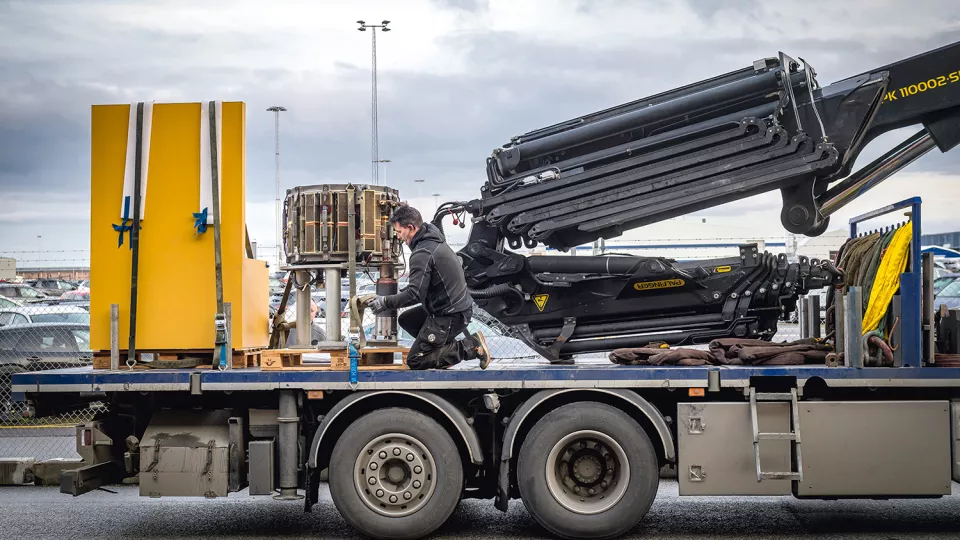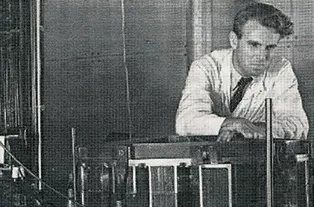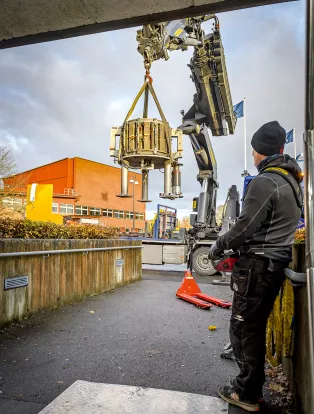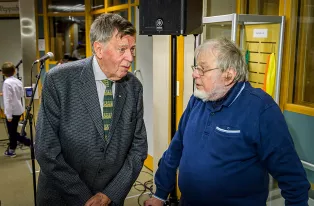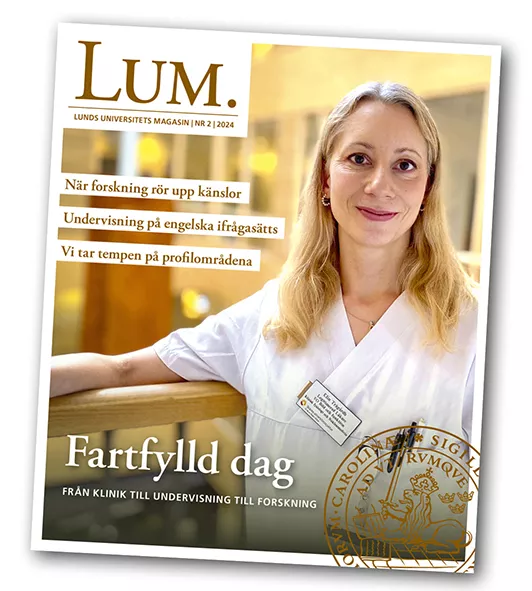The snowflakes whirled about in Lund, the cold January air finding its way into the Fysicum basement, where doctoral student in nuclear physics Bengt Forkman was pulling on his white lab coat. It was 1954 and it would be a while before protective equipment became standard. He walked to the electricity board and turned a lever, whereupon the department's new electron accelerator started with a buzzing sound.
Nuclear physics was having its moment. Following the atomic bombs over Hiroshima and Nagasaki, the subject was being studied in detail at a series of higher education institutions around the world, including Lund University. A discarded accelerator from the KTH Royal Institute of Technology was purchased after a donation from a shipping family in Helsingborg.
Bengt Forkman was the first nuclear physicist in Lund to be able to use the machine in his research. The young doctoral student glanced at the control room where his assistant was at the ready with a thermos of liquid nitrogen to be able to run in to cool the accelerator down every fifteen minutes. Bengt Forkman then began his experiment, based on exposing oxygen to X-ray radiation.
"In the 1950s, my colleagues and I used the accelerator for epoch-making research within both nuclear physics and medical radiation physics. In the mid-1960s, the machine had become outdated and was replaced by the LUSY accelerator", says Bengt Forkman, currently a professor emeritus of nuclear physics.
In connection with LUSY's entrance on the scene, the original accelerator began its journey towards the depths of scientific history. Scrapping was considered, but at the last moment the machine was saved by Malmö Museum, which in 1968 added it to its collections. While museum visitors could see the obsolete treasure UrMAX, Bengt Forkman continued his research in nuclear physics and later became one of the initiators of MAX lab, where he was also director for ten years. The rest is electron accelerator history. UrMAX's heir MAX IV – the world's brightest synchrotron facility – currently spreads across Brunnshög.
In spring 2018, Bengt Forkman created a preservation group. The aim was to showcase the equipment used in ground-breaking research in science and technology at Lund University. Thanks to a donation from the Thora Olsson foundation, Forkman's group have been able to wake UrMAX from its slumber in the Malmö Museum warehouse, where it has stood since 2007.
On a bitterly cold November morning, LUM met with the somewhat stressed exhibition producer Lotta Elmros among bronze sculptures and vintage motorcycles in the antiquarian depository. She is responsible for ensuring that the 1 265-kilogram accelerator reaches its destination in Lund unscathed so that the exhibition on UrMAX can have its opening on the scheduled date.
"Here is the tarpaulin we will cover the accelerator with. It would be pretty sad if it got hit by bird droppings while in transport", she says and smiles.
A few minutes later, the compact piece is lifted with the help of a red forklift and placed on the loading platform of a waiting truck. After the accelerator has been securely fastened, Lotta Elmros can breathe a sigh of relief.
"This exhibition says so much about the technological development, but also about the spirit in the 1960s. Everything was characterised by the sense that you should throw out the old to the benefit of the new. UrMAX was on the verge of ending up on the scrapheap", she says.
Five days later, the cameras are flashing at the Faculty of Engineering. The study centre's foyer is full of visitors who have come to admire UrMAX. Bertil R Persson, professor emeritus of medical radiation physics and convenor of the preservation group, stands for a long time admiring the primitive accelerator.
"I dream about a museum with historically significant scientific equipment, ideally linked to the Vattenhallen Science Centre. It would be fantastic to give current researchers a deeper understanding of how it all began once upon a time", says Bertil R Persson.
Bengt Forkman stands by his side.
The gaze of the 89-year-old nuclear physicist moves slowly across the accelerator's bare copper shell.
“If this little machine, which I have carried in my heart throughout my life, had not come to Lund we would not have had MAX IV today. I often think about that when I go past Brunnshög and see the gigantic research facility”, he says.


